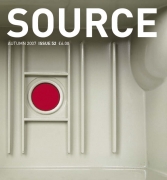John Hilliard
Talks about the Evolution of his Work, His Working Methods and the Difference between Photographs Made by Photographers and Those Made by Artists
Issue 52 Autumn 2007
View Contents ▸
View photographs by: John Hilliard ▸
Richard West: When do you first remember taking photographs?
John Hilliard: When I was still at school I was interested in railways, so I started to photograph trains. We had a next door neighbour who was an amateur photographer and took pictures for the local community. He taught me a little bit about photography, helped me to chose a camera and developed my films for me. Then when I went to the local art school in Lancaster we could do a little bit of photography as part of the course and so I began to take pictures of other things as well. I went there for two years and after that I got into St. Martin's and did a degree equivalent course there.
Richard West: What did you do in the first year of the St. Martin's course?
John Hilliard: The teaching was very much centred on ideas, not on some prescribed way of working. I thought it was a good approach because it made you think about what you were doing and about how you were doing it. We also had to make something which was described as a 'documentation model', which meant that everything you did had to be in some way documented and incorporated, so that you always had oversight of everything you'd been doing. I had never been asked to do anything like that before and I thought that it was very useful.
Richard West: What happened when you finished the degree: what work did you make after you left?
John Hilliard: Well, when I left, I was working as a park labourer in Kilburn Grange Park. I moved from Kilburn to a place below Parliament Hill Fields which had a studio space in the basement. Initially, I was continuing with the kind of sculpture work I'd been doing, and I photographed them... but there was a point at which I began to consider the status of the photographs. Even if I didn't intend them to, they had displaced the things they recorded because that's actually what people saw. So I started to make my work in the knowledge that it would be photographed, and then I began to make it only to be photographed so that it did not have to be visited and seen at first hand. Then that whole issue of the reliability of the photograph of a piece of sculpture - as convincing and sufficient evidence of a piece of work - came up, and that's the position I have been in ever since. That's why all my work is about the reliability of photographs as representations, especially through a single image.
Richard West: So these first works, could you describe them?
John Hilliard: I painted the studio in primary colours and I put something in the studio in conjunction with these coloured areas, to show that it was coloured in reality, it wasn't just done by putting a filter over the lens. For example, I made a work which was called Red Coat/Blue Room. The room is painted blue, and a red towelling dressing gown is hung on the door to prove the actuality of the blue room. The other thing to say about them is, because I did a red room, a yellow room, a green room and a blue room, I realised there was no point in painting what was outside of the frame, because you weren't going to see it anyway, and deliberately painted only to the edge of the frame. Eventually, two or three years later, I started making work which was about cropping the picture. If I could see just outside the viewfinder would it change my idea of what I was being presented with?
Richard West: The transition to using photography as the main part of your practice, did that entail learning more about it?
John Hilliard: As soon as I started to interest myself in the fundamentals of photography, things like time, light, movement, etc, and to set up circumstances to investigate them, I had to figure it out for myself and I made some stupid mistakes. But, of course, through making those mistakes you learn a lot, and its probably a good thing that I went in without having a lot of instruction technically. There's a work I made in 1970 called Sixty Seconds Of Light which sets up the photographer's darkroom clock so that the clock is both the timing device for making the twelve successive exposures and the subject of the work. When the second hand reaches twelve o'clock, I make the exposure, and as soon as the second hand is on the five I stop. Then I go back to the beginning with the next frame of film and I do ten seconds, etc. Now, I want the light to be reflected from the second hand, so that it leaves a trace on the piece of film, so that you can read that it took five seconds to make this shot, and so on, through to sixty, when I imagined there would be a virtual erasure with light. What I didn't know was that you could go and buy a clock with a dark face and a white hand. I had a clock which had a light face so I had painstakingly repainted it, That's how stupid I was, I didn't even know I could have gone out and bought the very instrument I needed. Sixty Seconds Of Light, 1970
Sixty Seconds Of Light, 1970 Sixty Seconds Of Light, 1970
Sixty Seconds Of Light, 1970 Sixty Seconds Of Light, 1970
Sixty Seconds Of Light, 1970 Sixty Seconds Of Light, 1970
Sixty Seconds Of Light, 1970
Richard West: When you first showed these works was the idea of somebody showing photographs in an art gallery unusual?
John Hilliard: Photography came into art at the end of the 50s and early 60s as a reference source for pop artists. I think the idea of artists using photography directly after that was something new that came out of documenting other forms of art, and the art world eventually coming to terms with that. When I started showing photographic work it was an uphill struggle. It was definitely a reviled medium and the audience was very small.
Richard West: You talk about artists electing to use photography as distinct from photographers, was that a meaningful distinction even then?
John Hilliard: I think it was a meaningful distinction. I think we felt we didn't have anything to do with people like documentary photographers, fashion photographers and fine art photographers... meaning people using photography who were considered to be using it in a 'fine art' way. The sort of people that John Szarkowski would have added to his lexicon of photographers in the Museum of Modern Art. I think the objectives were different, the reasons for using the medium in the first place were different and the results were different. I have always been interested in a range of kinds of photography, whether it's architectural photography or photojournalism or photography in advertising. It is nothing to do with a hierarchical distinction, it is just a distinction in kind between, let's say, artists' photographs and photographers' photographs. I think you could photograph a building, for example, as an architectural photographer, according to an assignment, and you could make a stunning photograph that puts a lot of your imagination and skill into that picture. Ten other people could come along and do the same job and make a much less interesting image, but nevertheless you wouldn't say - no matter how beautiful or expressive that picture is - that it's full of a certain kind of argument or a certain kind of set of ideas. Whereas there are other works made by artists, let's say somebody like Victor Burgin or Jeff Wall, where you certainly would say that. Those works offer themselves up to a form of deconstruction which is part of the pleasure of looking.
Richard West: Was there a critical discussion that was informing the work that you were producing in the early 70s?
John Hilliard: My motivation was really quite pragmatic. It was to do with my own hesitancy and questioning about encountering photographic works by artists which alluded to something else they had done or made, where the photograph was being put forward as an adequate substitute. I had been doing that myself, so I had exactly the same critical questions about my own work, and by extension I had them about other people's work. If this medium is going to be used why should it be only used for the purpose of constructing some kind of resemblance? Why can't it be used to celebrate its own qualities which, after all, are unlike the qualities of painting, unlike the qualities of casting in some medium, unlike the qualities of the moving image.
Richard West: What you say could almost be a modernist credo. It could be Clement Greenberg talking about being true to the medium?
John Hilliard: I think that's a fair comment. I don't think of myself as a postmodern artist I think I think of myself as a late modern artist, if you were going to have to put a tag on it.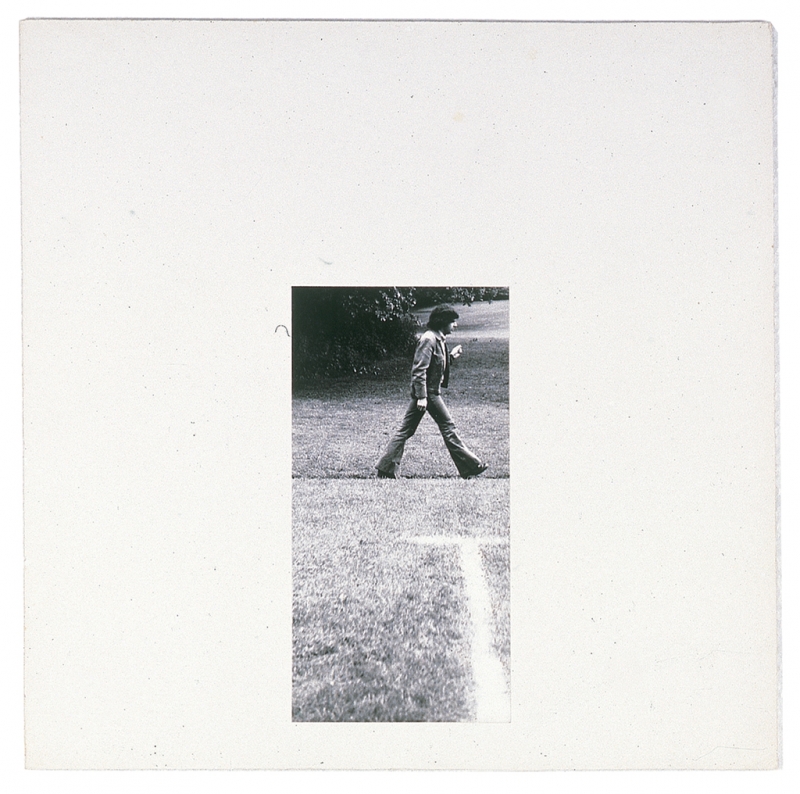 Across The Park (study), 1972
Across The Park (study), 1972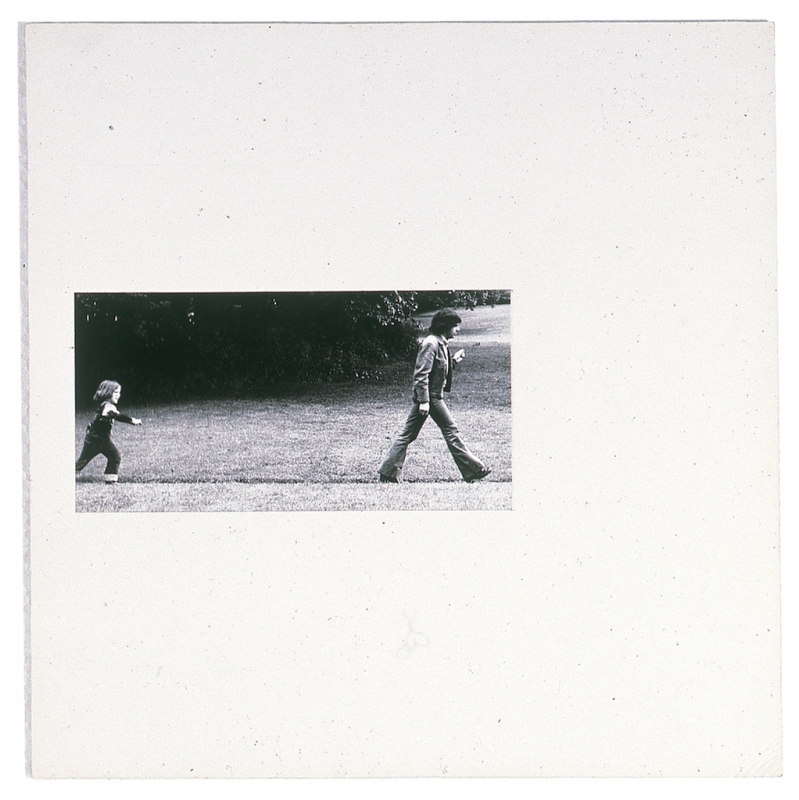 Across The Park (study), 1972
Across The Park (study), 1972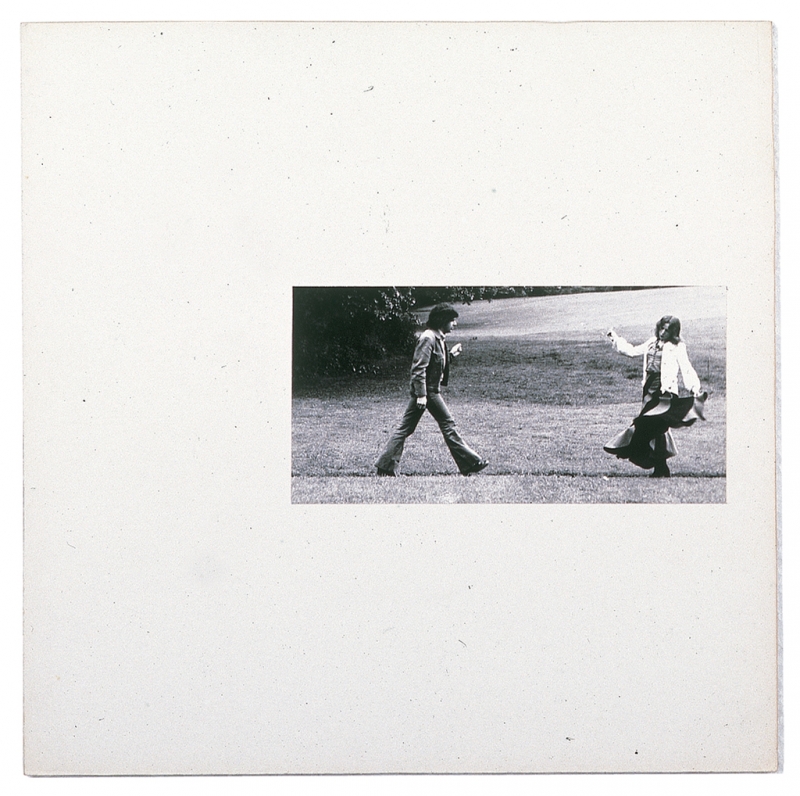 Across The Park (study), 1972
Across The Park (study), 1972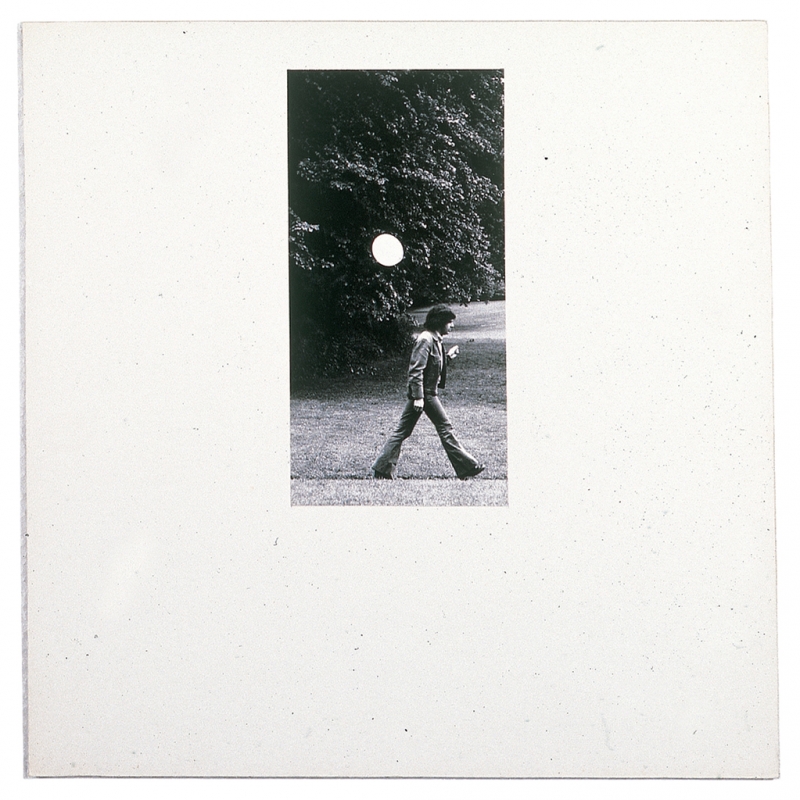 Across The Park (study), 1972
Across The Park (study), 1972
Richard West: There is a difference, though, between photographing rooms where the room is constructed as a sculpture and the camera recording its own condition. How did you get to that stage?
John Hilliard: Well, having acknowledged that any photograph is going to require you to make decisions, what's your position in relation to what's being photographed: the lighting, the settings on the camera and the particular kinds of films that you decide to use? I was admitting that those qualities were an essential ingredient of the media, and deciding to look at them in themselves. I was selecting imagery which would articulate those kind of facets of the medium. Within the 70s, I went from these modular pieces using things like shutter speed and aperture size to works which were to do with the way the images were cropped, and in 1975/6, I was doing work which was to do with differential focusing. Then I started getting interested in the difference in the density within black and white film. Already I have described four bodies of work within that decade and that's not everything.
Richard West: So did you reach a conclusion point with this programme, did you kind of run out of essential components of photography?
John Hilliard: Not yet. But apart from this shift in attention to different facets of the medium, there was a reduction in the number of elements in a single piece. With differential focusing you've got foreground, mid-ground and background. If you go beyond that, things begin to bleed back into focus, so there is a lot of work with three. And then in the 80s, I was comparing negatives and positives, black and white and colour, upside down and right way up. So there was all these kinds of diametric oppositions bring me down to two. Then often I put those two elements together to make a kind of singular, divided whole. The last step was to go down finally to a single image, by having these differences within a single picture space. I began to do some work where I was using differential focusing but as a triple exposure. So focusing on the foreground and taking a shot; without progressing the film, focusing on the mid-ground and taking a second shot on top of the first; and doing the same again for the middle distance. I think everything I have done subsequently has still been within the confines of this single image. The most recent things that I have done are a reduction of a quadruple exposure, made from four points of view, to a double exposure which is made from two opposing points of view, generally towards some object which is relatively flattened or has a distinct profile within a particular plane.
Richard West: And what is your subject matter?
John Hilliard: I think I have always tried to chose something which is appropriate to the job. If you are going to make a piece or work which wants to see the consequence of using different combinations of f stop and shutter speed the best way to do that would be to use the camera operator and camera themselves as the subject. If it's something that has the same appearance viewed from different angles, what could that be? It has to be wholly symmetrical. A bottle was just one of those things that I thought of. I could have used a sphere. I suppose the thing about the bottle was it had other connotations, in this case to do with being a social drink. It also connects back to Cubism and their interest in simultaneous yet different perspectives on the same subject.
Richard West: The camera seems an almost inevitable subject for the Camera Recording Its Own Condition but there's a kind of playfulness with the bottle, or more strikingly with your Cubist party picture where you're getting people to mill around wearing different shaped hats.
John Hilliard: I agree there are more options. The body of work the Camera Recording Its Own Condition belongs in that period of just two or three years when I was deliberately operating under very finite restrictions. The body of work itself had to come to an end because there is only so much that you can do and keep it interesting for everybody. But humour is certainly one element which has cropped up recurrently within the work that I have done. I mean you can go right back to something like Across The Park which is a work with a figure of a walking man at its centre and the image is cropped differently to show what you would be able to see if you reframed the image to include what is above his head, what is below his feet, what's in front of him and what's behind him. The walking figure in this case is deliberately selected as an archetype of the artist who goes out into the world performing some kind of action - a walk for example - and takes photographs and brings them back into the gallery. I'm not being critical of colleagues, but it is a kind of parody. The fact that it is in a park extends that because it is saying 'You can do this in Montana but you can also do this on Hampstead Heath,' which is where it was shot.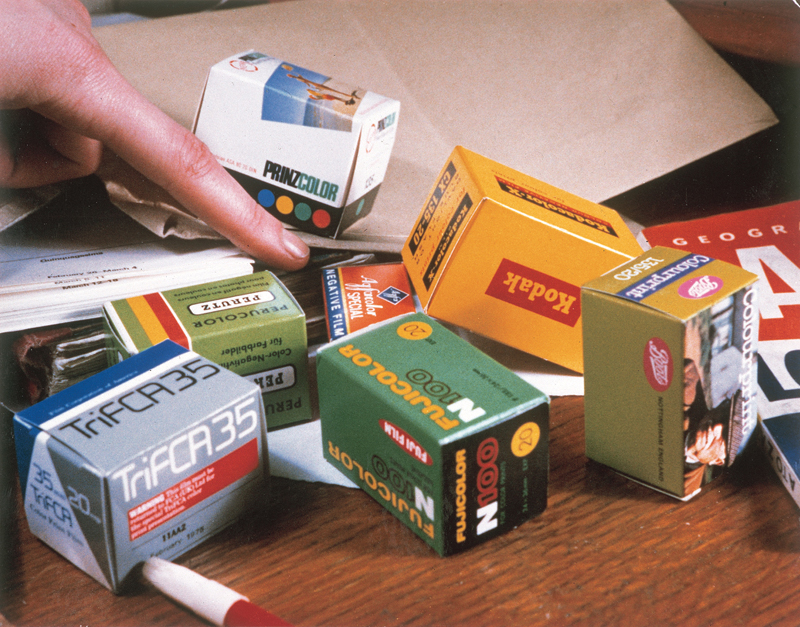 Seven Representations - Colour Negative Film Boxes, 1972
Seven Representations - Colour Negative Film Boxes, 1972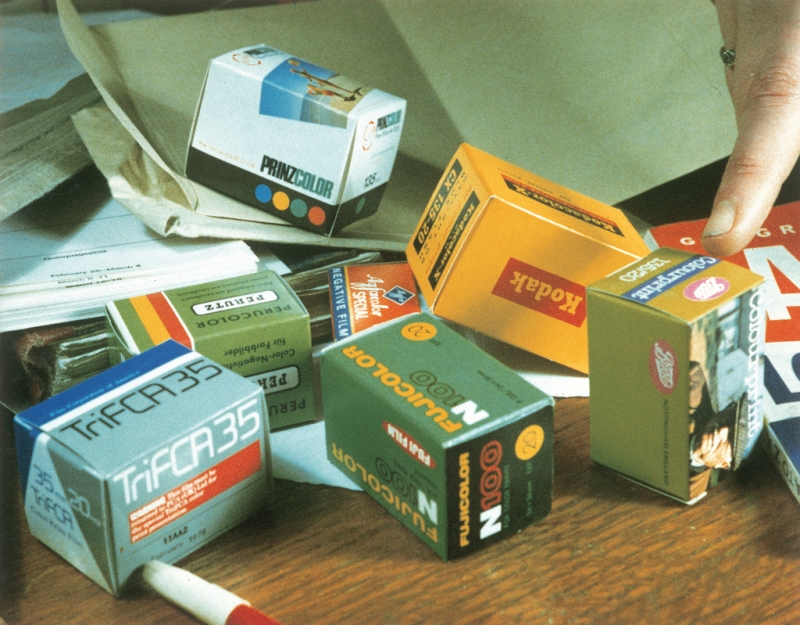 Seven Representations - Colour Negative Film Boxes, 1972
Seven Representations - Colour Negative Film Boxes, 1972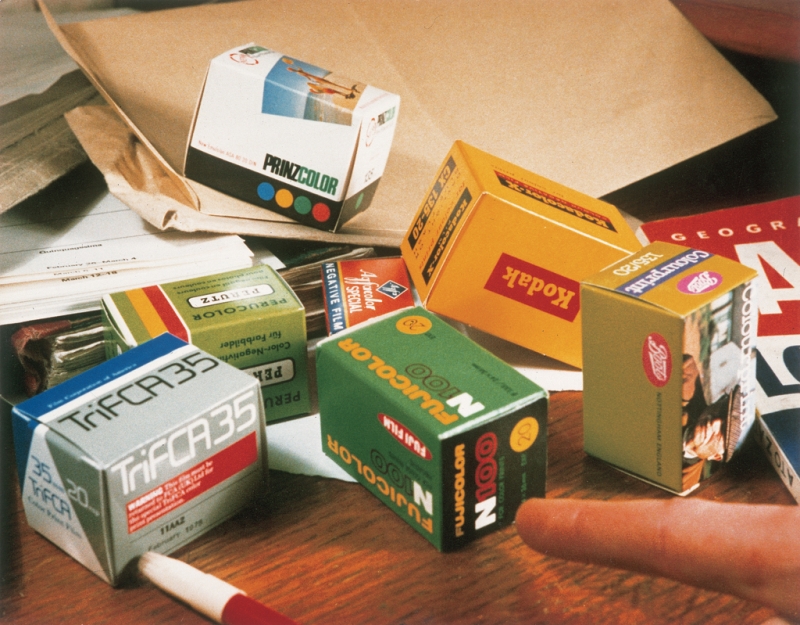 Seven Representations - Colour Negative Film Boxes, 1972
Seven Representations - Colour Negative Film Boxes, 1972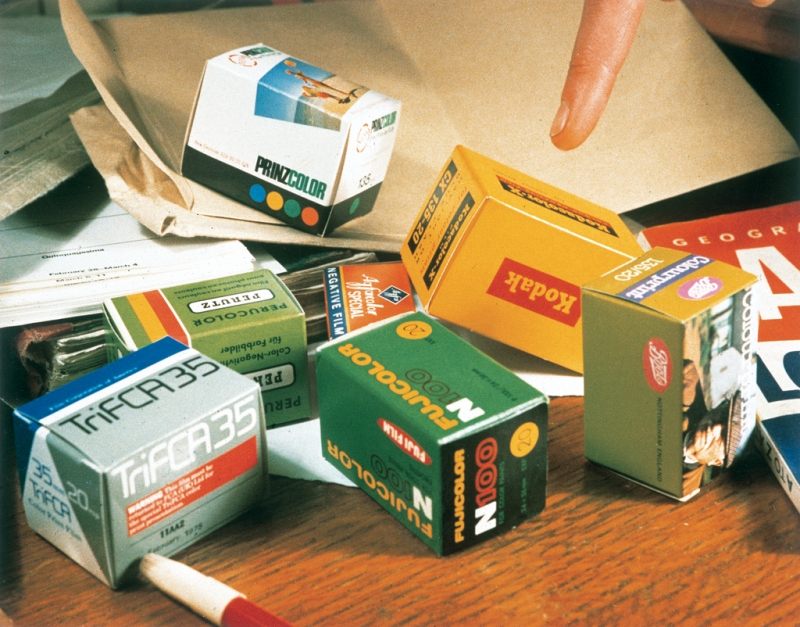 Seven Representations - Colour Negative Film Boxes, 1972
Seven Representations - Colour Negative Film Boxes, 1972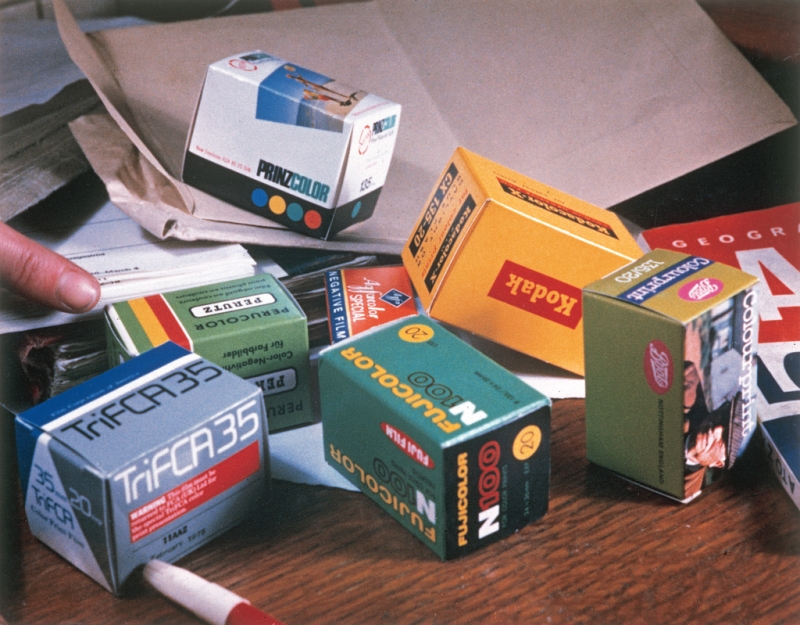 Seven Representations - Colour Negative Film Boxes, 1972
Seven Representations - Colour Negative Film Boxes, 1972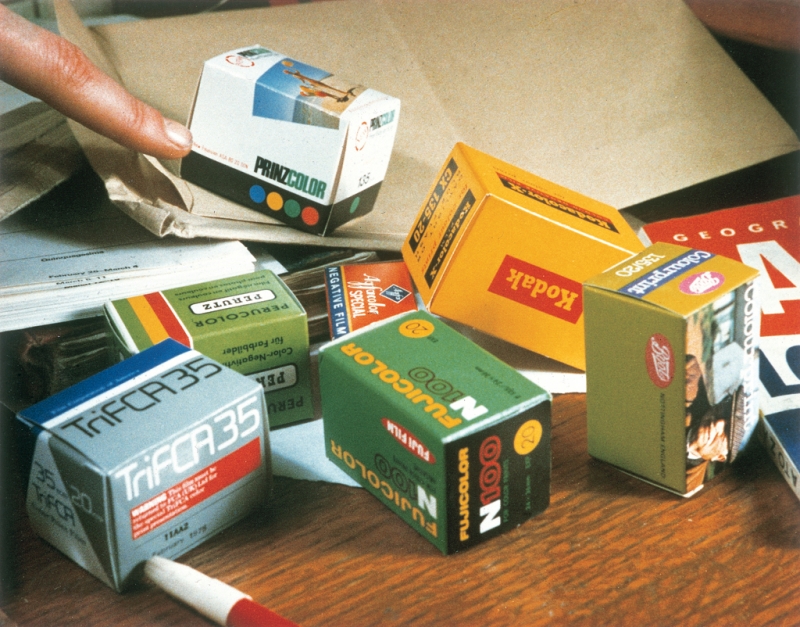 Seven Representations - Colour Negative Film Boxes, 1972
Seven Representations - Colour Negative Film Boxes, 1972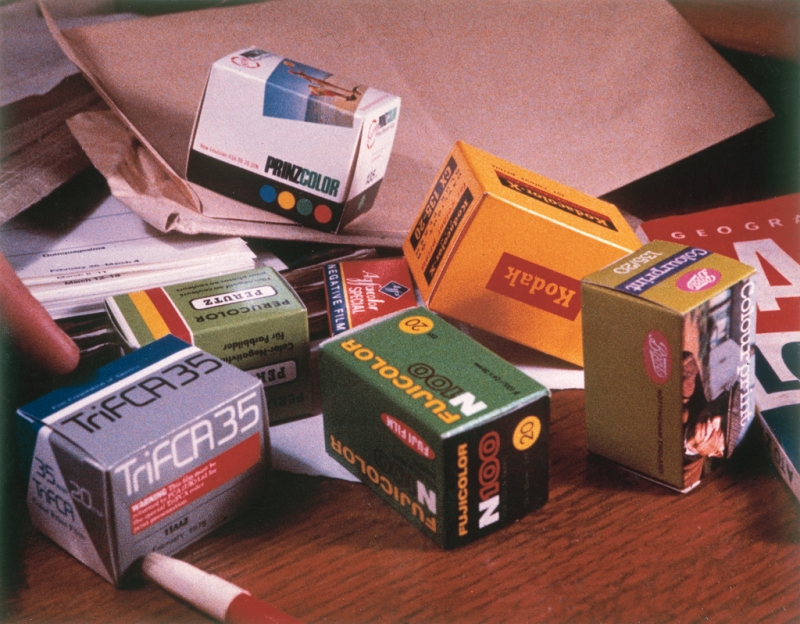 Seven Representations - Colour Negative Film Boxes, 1972
Seven Representations - Colour Negative Film Boxes, 1972
Richard West: What about the way you work? Your production is not unlike that of a painter from the nineteenth century, with drawings, a plan of what your doing and, in some circumstances, models and costumes. Why is that?
John Hilliard: I once did a talk about the use of drawing in relation to photography and I was using examples of creative directors in advertising or even people like Eisenstein or Hitchcock, the way they drafted out drawings to make shots in their films. But I think within still photography the idea of a sketch to be given to a photographer - if not actually drawn by the photographer - is fairly conventional. I have always started with the registration of an idea, so the preparatory drawing, or possibly even a short piece of writing, is the first ingredient which starts everything off. I make no claims for the drawings as things in themselves, they are simply a means to some other end.
Richard West: I would have thought it would have been easier to use a small camera to produce these sketches.
John Hilliard: I'm not sure that would even be possible for me, because what I am doing is making drawings that are trying to predict a kind of image that has no prior existence. For example, the piece I made called Yes/No, where there is a woman wearing a dress that is completely red on one side and completely green on the other: it's not only that the image has no prior existence, nor does the dress. That's an idea for a hypothetical dress. The drawing is allowing me to think out loud or onto paper, and to develop an idea about something which does not necessarily exist in the world yet. I have even worked that way out in the landscape. I have had to look at maps and go out on expeditions searching for something in the world, because I am trying to match it to a speculative drawing.
Richard West: Can you describe the Yes/No work?
John Hilliard: The 'red dress / green dress' is to do with this 'yes / no' idea. I'm not sure exactly which way round it was, but let's say the red was the entire front of the dress. If you confronted this figure you could say the red is signalling 'no, stop'. Whereas from the reverse, the dress is completely green and you could say that was a 'go' signal, a 'yes' signal. It's a kind of expression that people use almost unconscious where you ask somebody a question and they say 'yes / no'. They actually say both words but what do they mean? Do they mean 'yes' or 'no'? I wanted the mixture of colours to happen within the film and her outline to be basically the same if you took a picture of her from neck to ankle from the front and back. The only difference will be the background of either view. The colours of the dress mix on film to a rather murky, indistinct sort of colour. But because the two images will never be perfectly registered you get flashes of bright green or bright red round the edges.
Richard West: It sounds more to do with sexual permission or date rape or something much more aggressive, and the figure has clenched fists, yet you're suggesting that it's to do with casual conversation?
John Hilliard: I think both things are true. It's to do with sending mixed signals, but certainly you can make that connection with sending a conflicting sexual signal. I chose the pattern for the dress and I bought the material and I gave it to a dress maker to cut out and sew together. When Laura - who works as my assistant but who also gets called up as a model sometimes - put the dress on, we both thought it was completely bonkers. So I decided that's the kind of character I wanted it to have: verging on the type of dress you might wear in an institution.
Richard West: Your work has changed from an analytical approach to a more expressionistic style, in terms of the colour and what's going on in one frame. Are you conscious of this change yourself?
John Hilliard: Yes, I think it's more relaxed. I am more prepared to let stuff in that isn't necessary, but which actually might be as important as anything else in the end. However tight the preparatory scheme is, you have to accept that things are not going to work out exactly as you predicted, and the very fact that they don't could be a good thing. A failure or mistake can present an ingredient which, in the end, you think is extremely important; the one thing which you wouldn't want to lose. You then make observations about your own work after the fact. You can say, 'Well, this was my intent, but this is what I actually did, and as it happens it's a very useful extension to what I set out to do.'
Other articles by Richard West:
Source Photo: Do we need Photography Galleries? [Blog Post] ▸
Source Photo: The New Photo Galleries: A US Perspective [Blog Post] ▸
Source Photo: List Mania: 2011 Photobook Roundup [Blog Post] ▸
Source Photo: Is There a Crisis in Art Book Publishing? [Blog Post] ▸
Source Photo: Charlotte Cotton Resigns Media Museum [Blog Post] ▸
Issue 52: Teenage Girls at the Edges of Cities at Night... [Feature] ▸
Other articles mentioning John Hilliard:
Other articles on photography from the 'Conceptual' category ▸





